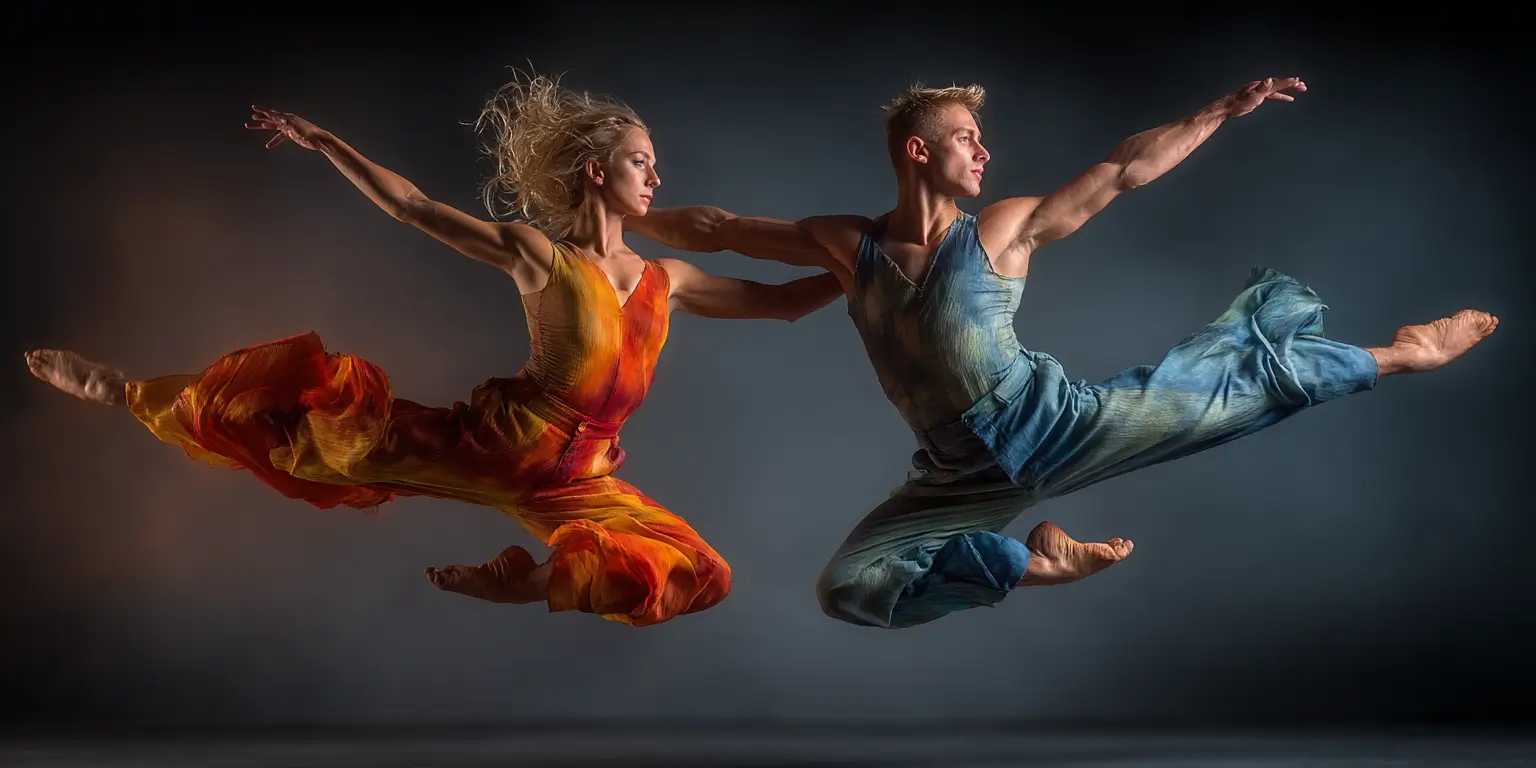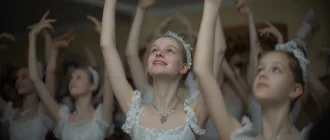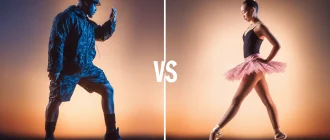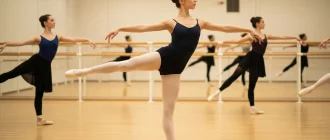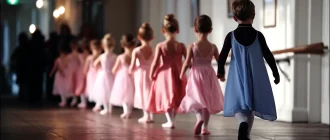Unsure about the differences between contemporary vs. modern dance? You’re not alone. Many people confuse these two styles. Modern dance started in the early 1900s, breaking away from classical ballet and focusing on emotion and storytelling.
Contemporary dance, evolving later, blends elements from several dance styles. This article will help you understand their main differences and make an informed choice.
Key Takeaways
- Modern dance emphasizes emotional expression and structured techniques, focusing on movements inspired by gravity and core engagement.
- Contemporary dance combines elements of jazz and hip-hop, emphasizing fluidity, improvisation, and a strong connection between the body and mind. Modern and contemporary dance are often grouped under popular dance styles, yet they have unique characteristics that set them apart.
- Choosing between modern and contemporary dance depends on personal interests; modern dance is more about storytelling, while contemporary dance encourages innovative and experimental expression.
| Aspect | Contemporary Dance | Modern Dance |
|---|---|---|
| Origins | Evolved from ballet, jazz, and modern dance techniques | It emerged as a rebellion against classical ballet in the late 19th and early 20th centuries |
| Movement Style | Fluid, expressive, often influenced by natural and abstract elements | Grounded, angular, often characterized by weighted, deliberate movements |
| Technique | Incorporates ballet and modern techniques with an emphasis on versatility | Focuses on core strength and balance, influenced by pioneers like Martha Graham |
| Choreographic Approach | Often improvisational, it allows more freedom in movement choices | Structured, with clear techniques and specific methods like the Graham and Horton techniques |
| Emphasis | Emotion, personal expression, and connection to music | Connection to the ground, in contrast to classical ballet principles |
| Musicality | A wide variety of music styles, may even be silent or abstract | Often set to classical or instrumental music with rhythmic clarity |
| Performance Setting | Theatrical settings, dance competitions, and experimental stages | Traditional theater settings and avant-garde performances |
| Best for Beginners? | Ideal for dancers looking for flexibility and artistic freedom | Suited for beginners who prefer structure and defined techniques |
| Notable Pioneers | Merce Cunningham, Pina Bausch | Martha Graham, Isadora Duncan, Alvin Ailey |
| Advice for Beginners | Experiment with improvisation with basic ballet or jazz to build flexibility and control. | Begin with modern techniques, like Graham’s, to develop core strength and foundational principles. |
Contemporary vs Modern Dance: Key Differences and Best Choices for Beginners
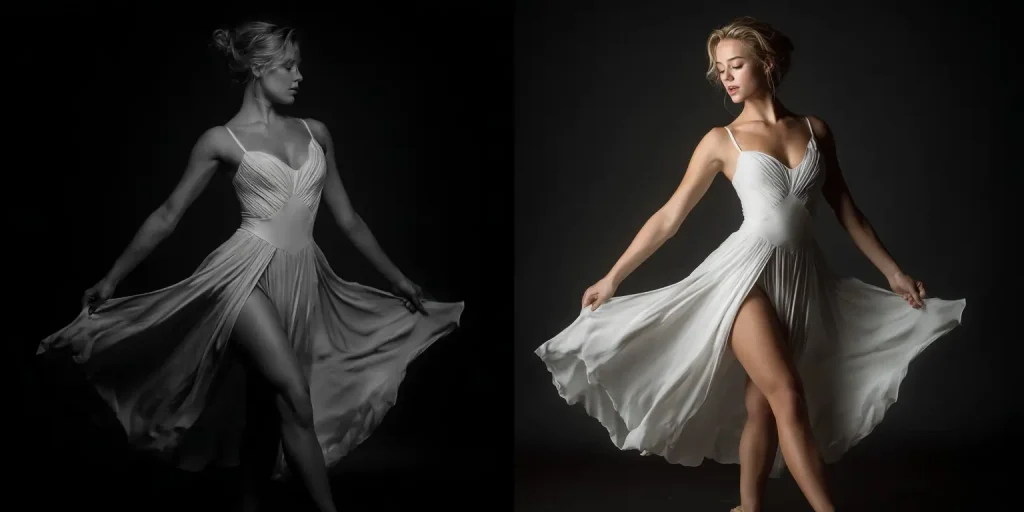
Emerging in the early 20th century, modern dance marked a departure from the stringent conventions of classical ballet. Modern dance pioneers such as Isadora Duncan and Martha Graham sought to break away from traditional ballet forms, laying the foundation for modern dance techniques and inspiring subsequent styles.
It favored unrestricted movement influenced by the dancer’s internal emotions and featured sharp angles, sudden halts, and supple spinal movements. Modern dance visionaries such as Martha Graham and José Limón developed methods focused on the gravitational pull, engagement of core muscles, and expressive gestures.
Contemporary dance emerged in the mid-20th century, incorporating elements from multiple styles, including ballet, jazz, and hip-hop. It distinguishes itself from modern dance by emphasizing seamless flow, spontaneous improvisation, and integrating body-mind awareness. This constantly evolving form breaks from set boundaries to include various practices, such as yoga and martial arts techniques.
For novices weighing their options between these two forms of expression—contemporary or modern—decisions are often guided by a preference for certain styles of movement and personal physical strengths.
Introduction
Discerning modern and contemporary dance differences can be perplexing without understanding their respective histories and technical nuances. These styles both serve as conduits for dancers to convey emotions and narratives, yet they have distinct differences, and each has unique methods of doing so.
Originating as a rebellion against classical ballet, modern dance presents an organized but deeply expressive art form that frequently explores themes from myths and folklore. Post-modern dance, influenced by figures like Merce Cunningham, further challenged traditional norms and integrated various influences into the movement.
In contrast, contemporary dance is born from the legacy of modern dance but distinguishes itself with its inventive fusion of other dance styles, including jazz, ballet, and hip-hop. It embodies a more integrated aspect in terms of movement execution while embracing individual creativity through techniques like improvisation and contact release — this results in performances that are both fluidic and kinetic.
Exploring these dances reveals unique sets of movements, dress codes, specific techniques, and performance approaches tailored to the preferences of different generations within the dancer community. Ultimately, aiming toward diverse artistic ambitions.
Origins of Modern Dance
Modern dance emerged at the beginning of the 20th century as a form of rebellion against the structured and precise nature of classical ballet and other traditional dances. It was fueled by dancers ‘need for personal expression and creativity, mirroring a wider cultural shift away from conventionality.
In contrast to modern dance’s ability, classical ballet is characterized by its disciplined techniques and established choreography, which some early modern dance practitioners considered confining. Dance Magazine spoke with various professionals to discuss the evolving definitions and distinctions between modern and contemporary dance, highlighting the credibility of these insights.
Martha Graham stands out among these innovators with her creation of the Graham Technique. This method harnesses core muscular contractions followed by fluid releases to express intense emotional narratives through movement. Her approach revolutionized how emotions could be communicated in dance, providing performers new ways to explore various aspects of human emotion and storytelling.
José Limón also made significant contributions by developing techniques that embrace gravity’s real pull, incorporating elements such as falling and rebounding, to craft performances rich in expressive motion.
Merce Cunningham introduced another dimension to modern dance by exploring asymmetrical movement and spatial experimentation in performance artistry.
His unique philosophy often involved composing music independently from choreography. This separation cultivated an unconventional relationship between sound and physicality when they were brought together on stage—an avant-garde concept promoting artistic liberation, unlike anything seen before in more traditional forms like ballet or classical dance.
This innovative spirit has positioned modern dance as an appealing genre for those captivated by powerful expressions within dramatic narrative contexts.
Development of Contemporary Dance
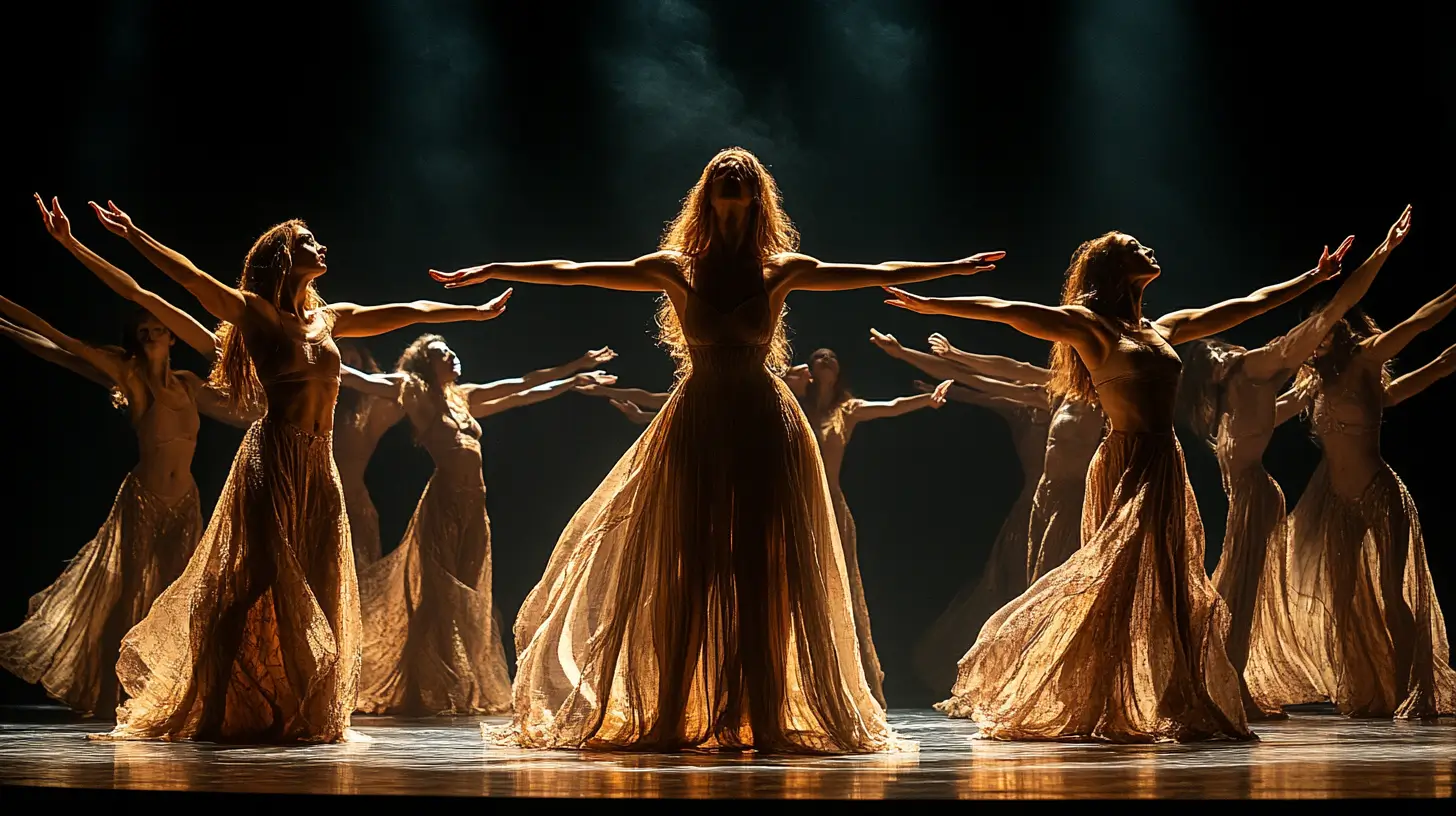
Contemporary dance, which emerged in the mid-20th century, evolved from the groundwork laid by modern dance and classical ballet. It is a dance style that intentionally diverged from traditional styles’ conventions to foster ongoing transformation and embrace various techniques, including contemporary jazz. In contrast to modern dance, which often tells emotional stories through organized movement, contemporary dance emphasizes innovation and fluidity.
This art form has been significantly shaped by incorporating elements from various other dances, including jazz, ballet, and hip-hop. This combination enables contemporary dancers to transcend conventional confines set by earlier dance forms while crafting dynamic performances rich in emotional depth. Contemporary ballet artists often incorporate practices like yoga or improvisation to highlight the connection between body and mind and the expressive capacity inherent in human movement.
The essence of contemporary involves collaboration among dancers, choreographers, and various artistic individuals, promoting singular artistic explorations alongside cutting-edge creative expression. Its collaborative nature and adaptable framework render it a perpetually progressive segment within the performance arts.
For those captivated by its avant-garde methods or its focus on affective bodily articulation, contemporaneous offers an abundant landscape ready for discovery, thanks to its diversity-rich foundation open to interpretation from various perspectives.
Characteristics of Modern Dance
In modern dance, the body’s relationship to gravity plays a crucial role, as dancers use their weight to create movements filled with expression. Unlike modern dance, contemporary dance incorporates various styles and techniques, emphasizing fluidity, athleticism, and versatility.
Significant within this domain is floor work that involves executing moves on or near the ground. This approach offers dancers opportunities for extensive emotional and corporeal exploration in performances. Each is imbued with deep personal resonance.
The characteristic asymmetrical movements prevalent in modern dance lend an element of surprise and fluid tension to the style. Such unpredictability pairs seamlessly with an emphasis on individual expression within this free-form side of dance, empowering performers to channel their sentiments and life stories through physical movement.
Renowned for its expressive capacity, modern dance conveys profound emotions and intricate stories using its distinctive movement lexicon. Each performance stands as a testament not only to technique but also to human emotion incarnate in motion-led storytelling.
Characteristics of Contemporary Dance
Contemporary dance is distinguished as a unique dance genre by its fusion of elements drawn from several dance forms, such as:
- modern
- jazz
- ballet
- hip hop
This amalgamation of styles permits contemporary dancers to transcend the confines of classical dance genres, giving rise to innovative and emotionally compelling performances. Contemporary dance’s seamless movement and the connection between mind and body render it a vibrant and expressive art.
A defining feature of contemporary free dance is its emphasis on improvisation and inventive spatial use. Dancers in contemporary classes are prompted to experiment with movements across diverse levels and orientations, often defying conventional standards in pursuit of novel artistic expressions. The concept of breath plays a pivotal role in this form, intensifying fluidity in motion and emotional expressiveness.
The collaborative essence inherent within contemporary dancing amplifies its artistic pursuits, leading to distinctive creations that capture innovation at its core.
Techniques in Modern Dance
The array of techniques within modern dance is extensive, aiming to craft expressive and vigorous movements. Floor work, contractions, and various release methods allow dancers to explore an expansive realm of physical storytelling. For instance, the release technique, also known as the Graham Technique, is renowned for its acute motions that transition into fluid releases—centered on core engagement—to convey intense emotional stories.
To these approaches, modern dance repertoire includes strategies specific to classical techniques, such as contact release and fall and recovery exercises paired with elements of improvisation, which grant dancers the latitude to experiment with a blend of precision and spontaneity.
This unique synthesis fosters a distinctive style of emotive depth interwoven with kinetic energy. The foundational practices instituted by luminaries like Graham, Horton, and Limón have instilled enduring principles integral to contemporary modern dance expression.
Techniques in Contemporary Dance
Contemporary dance is an art form that incorporates a range of movement techniques, with a strong focus on fluidity and body awareness. One such technique central to this dance style is the Release Technique, which emphasizes using breath as a catalyst for initiating movement while reducing body tension.
This approach helps dancers achieve movements that are more seamless and evocative. Floorwork constitutes an integral element of contemporary dance – executing ground-level moves to delve into varying levels and spatial dynamics.
In the realm of contemporary dance, improvisation holds significant importance, allowing dancers the freedom to express and convey their emotions uninhibitedly. Contact Improvisation especially stands out. It necessitates physical interaction amongst performers through lifting partners or guiding falls, fostering spontaneous yet structured choreography.
The fusion of these techniques creates versatility and underlines creativity within contemporary dance, an artistic practice characterized by its innovative spirit and potent expressiveness. This blending of styles often includes contemporary jazz, which showcases the integration of classical techniques with modern elements, reflecting the evolving definitions of dance genres.
Attire and Performance Style
In popular dance styles, modern and contemporary styles exhibit specific preferences for costumes and their approach to performance. Dancers engaged in contemporary dance often choose snug apparel, such as leotards or yoga pants, that offer substantial freedom of movement and increased flexibility. The greater emphasis on comfort and utility facilitates executing intricate moves more easily.
Contrastingly, attire in modern dance might incorporate more rigid outfits, which can potentially restrict mobility, compared to the more relaxed garments favored by those performing contemporary styles. Barefoot or wearing minimalist footwear like dance shoes, modern dancers emphasize their physical connection to the floor. This selection of clothing and method of style expression indicates this style’s ability to convey emotional resonance through expressive movements.
Popular Misconceptions
Contrary to popular belief and the widespread notion that modern dance is merely a compilation of odd or unorthodox movements, it is an art form with a rigorous structure, specific rules, and defined techniques, such as those pioneered by Graham, which involve contractions and releases.
Dance Magazine spoke with professionals in various dance fields to highlight the current definitions and distinctions between modern and contemporary dance. This misconception frequently leads to an underappreciation of the emotional intensity and technical complexity inherent in modern dance.
There is a common belief that lyrics are absent from the music accompanying modern dance performances. While various types of soundscapes — including instrumental pieces and non-traditional sounds — are utilized within this dance genre, choreographers do not shy away from using lyrical music when appropriate.
Such musical flexibility contributes to its ability to express a wide array of sentiments and stories, thus enhancing the multifaceted nature of modern dance as an art form.
Choosing Between Modern and Contemporary Dance
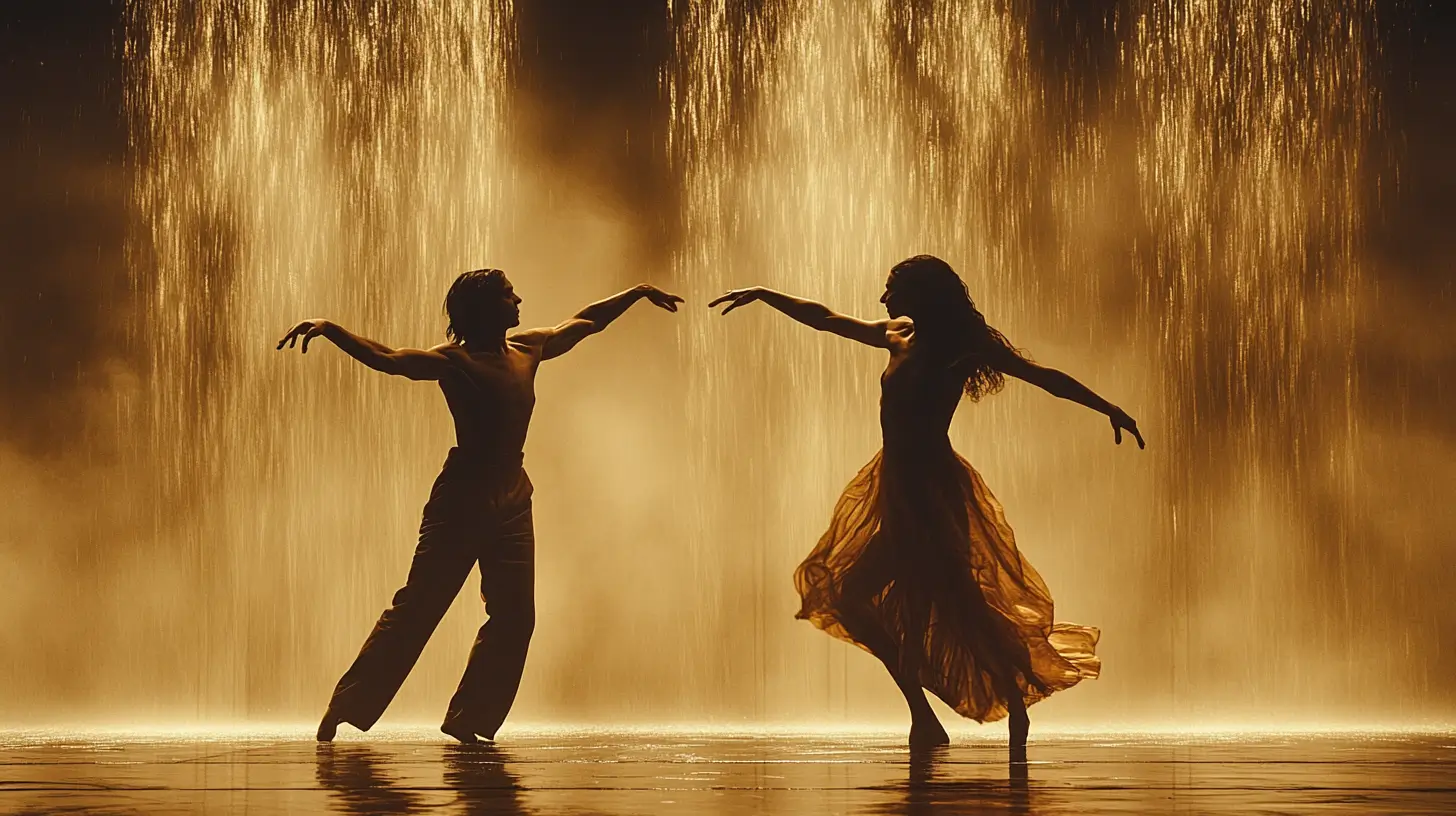
If you’re considering the choice between modern and contemporary dance as a novice, consider your preferences and physical abilities to make an informed decision. Unlike modern dance, contemporary dance incorporates various styles and techniques, emphasizing fluidity, athleticism, and versatility.
Modern dance might be well-suited for those captivated by intense emotional delivery and powerful narratives. This form of dance often delves into themes rooted in mythological tales, offering regimented techniques and profound expressiveness.
In contrast, if you are inclined towards versatility and creativity and think you can dance, embracing contemporary dance could be more appealing. It presents dancers with opportunities to engage in extensive improvisation, along with a liberated movement style, perfect for individuals eager to explore various methods and creative interpretations.
Contemporary styles tend to reflect on present-day societal topics while highlighting the synergy between body awareness and mental exploration. Its ever-changing terrain invites ongoing discovery.
Your artistic vision will ultimately direct your path. Whether pursuing expressive storytelling through established maneuvers or craving flexibility within experimental frameworks, each route has its merit for novices.
Both modern and contemporary forms are distinctively advantageous when starting in the realm of dance, as they foster expression through different facets, such as technique variation in modern dance or continuous reinvention in contemporary dance.
Influential Figures in Modern Dance
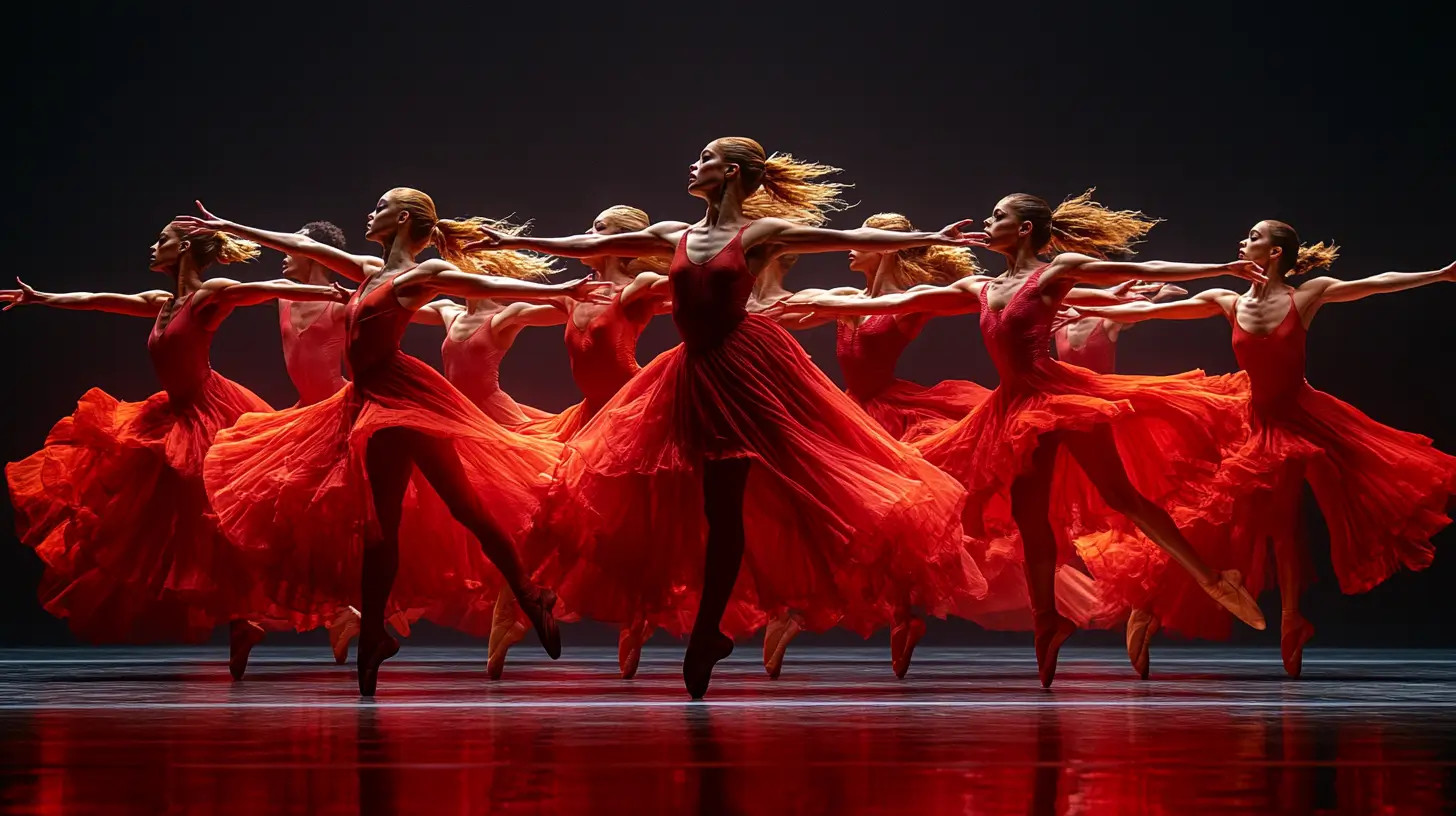
Modern dance pioneers like Martha Graham, an iconic figure in the contemporary dance world, are renowned for their groundbreaking work, which includes creating 181 ballets and a signature technique that profoundly transformed the dance world.
She employed choreography to express complex human emotions through distinctive contraction and release techniques. The impact of her contributions has been recognized by multiple high honors, such as receiving both the Presidential Medal of Freedom and the National Medal of Arts.
A former pupil of Martha Graham, Merce Cunningham emerged as a significant force in contemporary dance thanks to his innovative use of random sequences in choreography and his collaborations across various media forms.
His approach separated music from movement, so that each could stand alone during performances—this delineation became one of his hallmark features. Known for emphasizing space consciousness alongside asymmetric moves, Cunningham’s work resonates throughout today’s contemporary dance creations.
Additional luminaries who have stamped their influence on this art form include Lester Horton and José Limón—pioneers whose legacy still ripples through current styles. Notably, artistic director Horton was at the forefront of embracing diversity within the dance community, while inspiring the works of numerous present-day choreographers.
In contrast, but equally impactful, Limón foregrounded masculinity within contemporary movements, creating an expressive style inspired by wide-ranging themes encompassing pop stars, literature, and spirituality, among others, all contributing substantially towards shaping what we recognize now as modern elements rooted deeply within our rich cultural landscape surrounding contemporary performance arts.
Influential Figures in Contemporary Dance
Isadora Duncan is widely celebrated as the creator of contemporary dance, and she is noted for her focus on the body’s natural curves and expressivity. Her departure from the strict techniques of ballet laid a foundation for subsequent generations in the realm of contemporary dance, including the integration of modern jazz. Her legacy continues to ripple through various genres, inspiring dancers with her conceptual approach to movement.
Pina Bausch transformed contemporary dance by interweaving narratives within kinetic expression and delving into profound emotional depths. Merging elements of drama with dance movements, she crafted performances that resonated deeply with audiences worldwide. Her trailblazing methods have notably shaped modern art and prevalent dance styles today by enriching their narrative potential.
These pioneering artists have critically molded what we know as contemporary dance, infusing it with ingenuity and emotive power. Their seminal work has enhanced diversity in the world of dance and expanded its expressive capabilities, positioning contemporary dance as an ever-adaptive form that engages both artists and viewers alike.
Similarities and Overlaps
Modern and contemporary dance are distinguishable by their distinctive features, yet they overlap in several aspects, making it challenging to differentiate between them. The evolution of dance terminology, including the emergence of postmodern dance, highlights the ongoing transformation of dance styles and the blurring of lines between established categories.
Both forms prioritize expressing personal emotion and storytelling through physical motion, allowing dancers to translate intense emotions and stories into performance. The improvisational element prominent in contemporary dance is a legacy from its modern dance heritage, underscoring a mutual focus on creative liberty and inventive exploration.
Incorporating techniques such as floorwork alongside asymmetrical movements borrowed from modern dance is typical of contemporary styles. Lyrical dance’s storytelling resonates with the lyrical dance nuances found within contemporary movement practices, emphasizing their intertwined developments.
Fusing these elements, techniques, and philosophical approaches creates an intricate fabric of expressive choreography available for both modern and contemporary dancers to explore. This lyrical convergence ensures that each artistic presentation becomes a distinct manifestation of expression.
Impact on Other Dance Styles
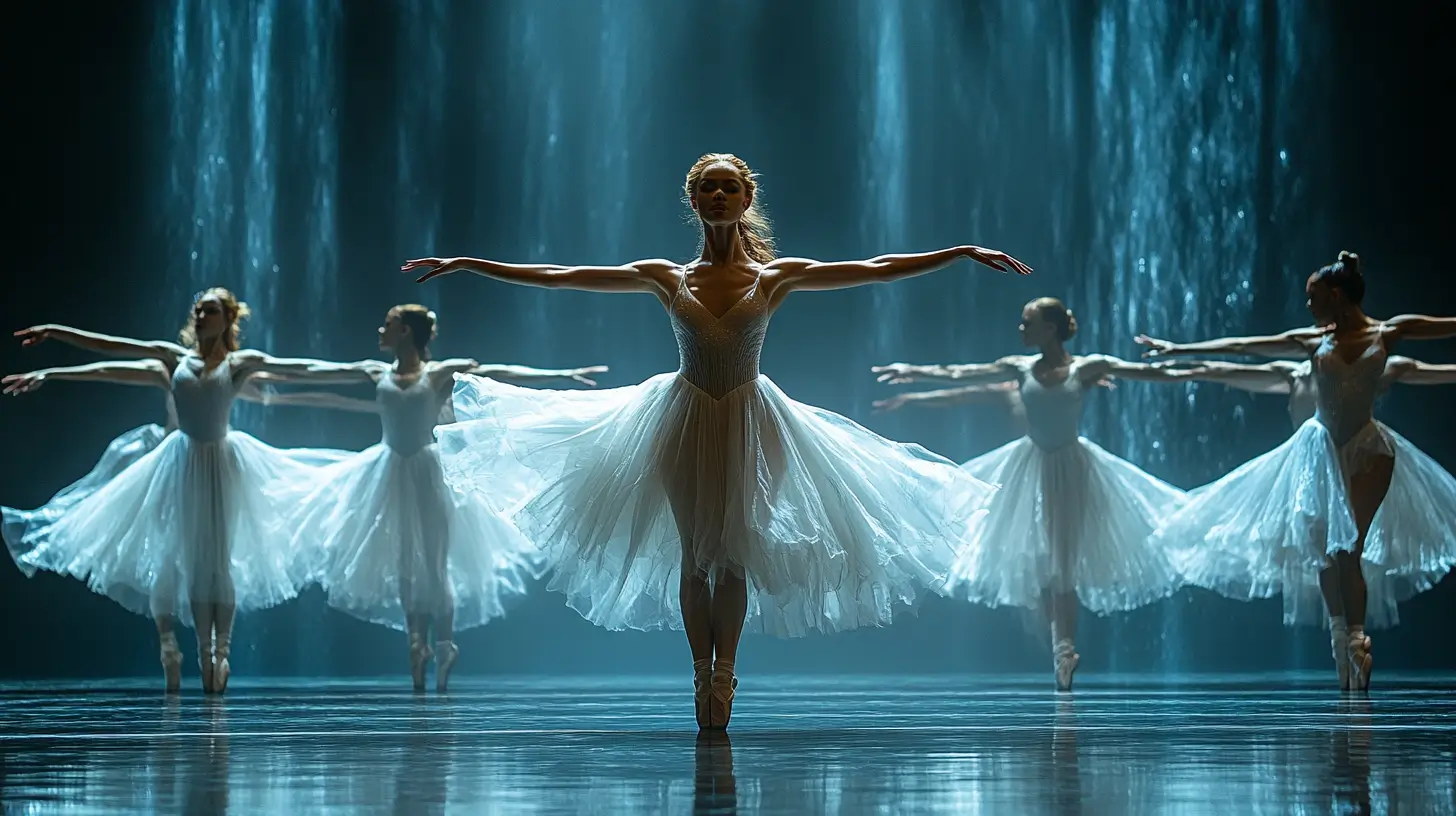
Modern and contemporary dance have significantly influenced various dance forms beyond their genres. The pioneering techniques developed by visionaries like Graham and Cunningham have left an indelible mark on dancers and choreographers worldwide, infusing the dance world with originality and artistic expression.
Contemporary dance has broadened its expressive range by embracing elements from diverse influences such as ballet and jazz, demonstrating remarkable adaptability.
The emergence of lyrical dance indicates how modern and contemporary styles can profoundly impact other areas within the genre. Originally known as lyrical dance or jazz, this dance form marries the emotiveness found in jazz with the precision characteristic of ballet technique – it’s testament to how integration between various styles leads to innovative hybrid genres.
As these realms intermingle and evolve collectively, they ensure that modern art continues to flourish through constant transformation. This perpetual interchange among different techniques ensures that both new audiences are drawn into the beauty of contemporary movement. At the same time, established lovers remain engaged by fresh interpretations across all aspects of dance.
Summary
Modern and contemporary dance are two styles that embody unique yet harmonizing methods of movement and artistic expression. Unlike modern dance, contemporary dance often incorporates elements from various styles and techniques, emphasizing fluidity, athleticism, and versatility.
Originating as a revolt against the rigidity of classical ballet in the early 20th century, modern dance strongly emphasizes emotive storytelling and expressive choreography through well-defined techniques. In contrast, contemporary dance emerges from modern influences, assimilating elements from various practices to emphasize creativity, seamless flow, and the integration of physical motion with psychological states.
When choosing between these distinct dance forms—modern or contemporary—the decision is influenced by individual preferences, physical capabilities, and the artistic director’s creative objectives.
One might be captivated by the narrative intensity found within modern dance or inclined towards the avant-garde fluidity characteristic of contemporary works. Both realms offer dancers profound opportunities for exploration at all skill levels. They encourage individuals to delve into diverse movements and allow their innermost feelings to resonate through the art form.
Frequently Asked Questions
What are the main differences between modern and contemporary dance?
Modern dance is all about emotional expression and structured techniques, while contemporary dance blends various styles, focusing on fluidity and innovation, making each a distinct dance genre.
So, if you’re going for a dance form about strict technique versus one about creativity and experimentation, that’s the main difference!
What techniques are commonly used in modern dance?
Modern dance, shaped by pioneers like Isadora Duncan and Martha Graham, commonly uses floor work, contractions, release techniques, and improvisation techniques. Pioneers such as Graham, Horton, and Limón have significantly influenced these essential practices.
Who are some influential figures in modern and contemporary dance?
Martha Graham and Merce Cunningham are pivotal in modern dance. At the same time, Isadora Duncan and Pina Bausch have greatly influenced contemporary dance with their focus on natural movement and emotional depth. Dance Magazine spoke with various professionals in the dance field to discuss the current definitions and distinctions between modern and contemporary dance.
These artists have left a lasting mark on the dance world, shaping how we express movement today.
How can beginners decide between modern and contemporary dance?
Choosing between modern and contemporary dance comes down to your preferences and what you want to achieve. Unlike modern dance, contemporary dance incorporates various styles and techniques, emphasizing fluidity, athleticism, and versatility. Modern dance might be a good fit for you if you love structured techniques and storytelling. If you’re into improvisation and a mix of different styles, contemporary dance is a great choice.
Can adults with no prior experience start modern or contemporary dance?
Absolutely. Most community studios and university extension programs offer beginner tracks for adults, and teachers are used to modifying combinations for varying mobility levels. Modern tends to favor controlled, grounded work that can be easier on joints, while contemporary often uses fluid transitions that help loosen stiff muscles. With consistent practice and a sensible warm‑up, newcomers in their 30s, 40s, or even 60s can progress safely.
Why do modern dancers train barefoot while contemporary dancers sometimes wear socks or foot thongs?
Modern techniques were built on direct contact with the floor to emphasize weight, resistance, and tactile feedback; bare feet maximize that sensation. Contemporary choreographers, on the other hand, frequently incorporate slides, pivots, and quick directional shifts. Thin socks or foot undies reduce friction just enough to glide without sacrificing articulation, giving dancers a wider movement vocabulary.
What does a typical class structure look like for each style?
A modern class usually begins with a structured floor or seated warm‑up (think Graham contractions or Limón swings), moves to standing center exercises, and finishes with travelling combinations across the floor. Contemporary classes often open with improvisational imagery work, flow into yoga‑inspired core sequences, and end with phrase building that blends ballet lines, floor work, and partner lifts.
How is improvisation used differently in the two forms?
In modern dance, improv is often task‑based—exploring gravity, breath, or a specific dynamic inherited from pioneers like Nikolais. Contemporary teachers lean on contact improvisation, sensory prompts, and even scores borrowed from theater to generate material. The goal is less about discovering a set vocabulary and more about unlocking individual choices in real time.
What conditioning drills best support modern dance technique?
Core‑centric exercises—such as Pilates roll‑downs, plank variations, and Graham‑style contractions—reinforce the torso control modern demands. Contemporary dancers still need core power but also benefit from shoulder‑girdle stability work, dynamic hip openers, and mobility flows that aid in seamless floor transitions.
How do choreographers in each style approach music and sound?
Modern choreographers often start with rhythmic clarity, choosing orchestral or percussive scores to highlight weight shifts and breath. Many contemporary makers reverse the process—building phrases in silence first, then layering electronic beats, spoken word, or ambient noise. Some pieces intentionally keep silence to foreground the sound of bodies moving through space.
What career pathways exist for modern versus contemporary dancers?
Modern dancers frequently audition for legacy companies that preserve a specific technique (e.g., Graham Company or Paul Taylor Dance Company) or for university residencies that tour repertory works. Contemporary dancers might freelance, join repertory ensembles that commission diverse choreographers, or crossover into commercial gigs like music videos and immersive theater. Both tracks value teaching credentials, which can supplement performance income.
Are there major festivals dedicated to each genre?
Yes. The American Dance Festival and Jacob’s Pillow host modern and contemporary programming but curate separate technique intensives. Contemporary‑leaning festivals like B12 in Berlin or Fall for Dance North prioritize cross‑genre collaboration, while the Limón Institute’s summer workshop focuses squarely on modern heritage.
What should dancers expect at auditions for modern vs. contemporary companies?
Modern auditions typically start with a full‑length technique class in the company’s signature style, followed by set repertory phrases. Contemporary auditions may begin with improvisation tasks, partnering tests, and collaborative phrase‑building to gauge versatility and creativity. Both require stamina—plan to be in the studio all day.
How do partnering skills differ between the two styles?
Modern partnering often emphasizes counterbalance and weight share drawn from classical lifts but redirected through grounded centers of gravity. Contemporary partnering borrows from acrobatics and contact improv, favoring rolling points of contact, momentum transfers, and inverted supports. Being comfortable upside down is a bigger asset in contemporary work.
Why is floor work so prominent, and how can dancers practice it safely?
Both forms use floor work to explore gravity, but contemporary choreography demands faster, spiral‑based descents and rebounds. Drills like knee slides on marley, shoulder rolls on cushioned mats, and soft cartwheels build proprioception while protecting joints. Conditioning the back and obliques is crucial for smooth landings.
Can classically trained ballet dancers transition easily into these styles?
They can, but must unlearn certain habits. Modern teachers encourage pliant spines and weighted pliés, contrasting with ballet’s lifted torso. At the same time, contemporary classes ask for release through the neck and ribs, plus movement initiated from multiple centers, not just turnout. Ballet dancers who embrace parallel alignment and floor contact adapt quickly.
How much do classes typically cost in the United States?
Drop‑in rates at urban studios average $18–$25 for a 90‑minute modern or contemporary class. Monthly youth tuition ranges from $120 to $200, depending on class frequency. Though many offer need-based scholarships, intensive workshops at major festivals can cost $500–$1,200 for two‑week sessions.
What lighting and stage design aesthetics are common to each style?
Modern works often use stark white sides or down‑lights to sculpt bodies, reflecting the era’s minimalist ethos. Contemporary pieces embrace multimedia—LED walls, interactive projections, and moving light instruments—to create immersive environments that shift with the choreography.
Are there teacher‑training certifications specific to these disciplines?
Yes. The Martha Graham School and Horton Pedagogy Program grant official certificates after multi‑week intensives and practicum assessments. Contemporary dance has fewer standardized tracks; instead, educators compile credentials through university MFA programs, Gaga teacher training, or Axis Syllabus intensives.
How do the styles engage with social or cultural themes?
Modern dance historically tackled universal archetypes—myth, ritual, human struggle—often from a Western viewpoint. Contemporary choreographers are more likely to address current events, identity politics, and cross‑cultural dialogues, integrating movement languages from hip hop, voguing, or Afro‑diasporic forms to reflect global perspectives.
What warm‑up habits minimize injury risk in each style?
For modern dancers, breath‑led core activations and gentle spine articulations prime the body for contractions and releases. Contemporary dancers add wrist, shoulder, and ankle mobilizers to prepare for floor slides and inversions. Both benefit from dynamic stretching rather than static holds before class.
How can parents support children choosing between modern and contemporary classes?
Observe trial lessons, ask about teacher credentials, and note whether the environment emphasizes exploration (common in contemporary) or foundational technique progression (common in modern). Encourage cross‑training in ballet or gymnastics for alignment and strength, and prioritize studios that stage age‑appropriate performances to motivate young dancers.

